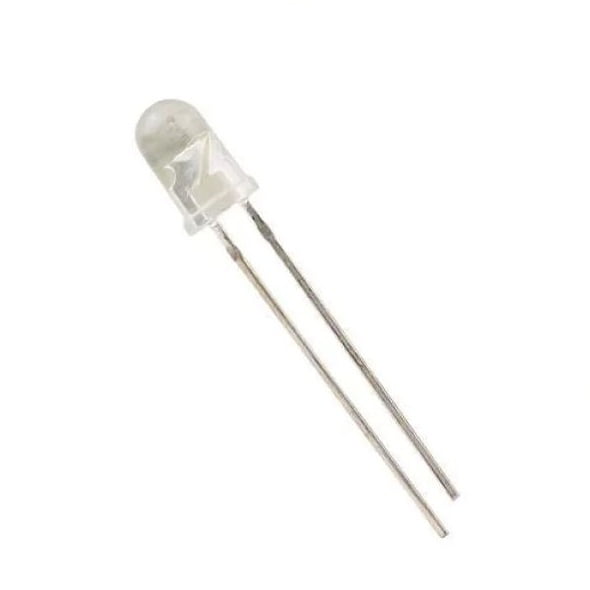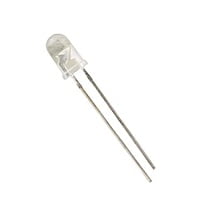


IR-Infrared LED Transmitter
Product Details
IR LED: The "IR" stands for Infrared, which is a type of electromagnetic radiation with longer wavelengths than visible light. An IR LED is a light-emitting diode that emits infrared light when it is forward-biased with an electrical current. Infrared light is invisible to the human eye but can be detected by certain sensors, such as photodiodes.
Photo Diode: A photodiode is a semiconductor device that detects light or other forms of electromagnetic radiation. When exposed to light, a photodiode generates a current or voltage that is proportional to the intensity of the incoming light. In the context of this pair, the photodiode is typically sensitive to infrared light, making it suitable for detecting the emitted light from the IR LED.
Pair: The IR LED and photodiode are matched together as a pair, meaning they are designed to work in tandem. The IR LED emits infrared light, and the photodiode detects this light. This pairing is commonly used for applications such as object detection, proximity sensors, and infrared communication.
3mm: The "3mm" measurement specifies the diameter of both the IR LED and the photodiode. In this case, both components have a 3mm diameter, which is a common size for discrete electronic components.
Applications:
Proximity Sensors: These pairs can be used to detect the presence or absence of objects within a certain range. When an object comes within the detection range, the reflected infrared light from the IR LED is detected by the photodiode.
Infrared Communication: Infrared communication systems use IR LEDs to transmit data, and photodiodes to receive the data. This is commonly seen in remote controls for televisions and other appliances.
Object Detection: IR LED and photodiode pairs are used in various applications where object detection is required, such as in robotics, security systems, and industrial automation.


